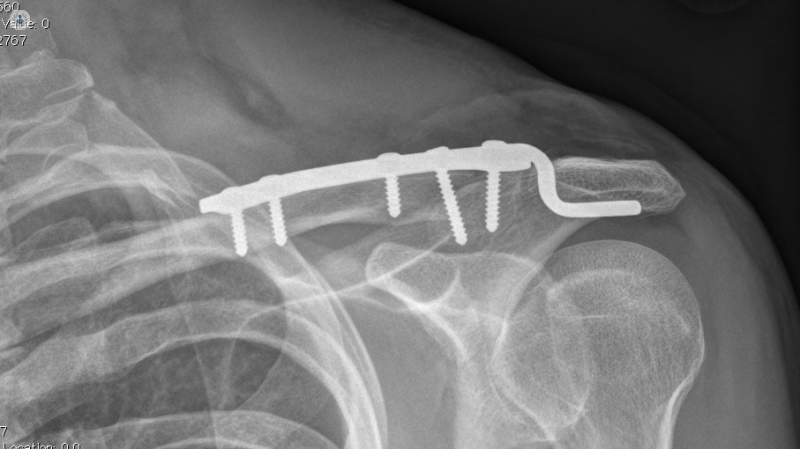Osteosynthesis
Professor Xavier Griffin - Orthopaedic surgery
Created on: 10-06-2015
Updated on: 04-05-2023
Edited by: Aoife Maguire
What is osteosynthesis?
Osteosynthesis is a type of reconstructive surgery aimed at stabilising and joining the ends of a broken bone after a fracture, an osteotomy, or a non-union from a previous fracture. Bone fragments are stabilised by using mechanical devices.
This allows for a complete or partial healing of the muscles and joint function. Once the bone fragments are stable, the mechanical device can either be removed or left in (if the procedure consisted of an internal fixation).

What is osteosynthesis for?
Osteosynthesis is mainly done after a bone fracture. One of the fractures most commonly treated by osteosynthesis is the femoral fracture, although osteosynthesis can be used for many others as well. In the case of lateral fractures (a type of ankle fracture), this procedure can quickly heal the affected bone. It is particularly suitable for young people.
Osteosynthesis can also be used to treat bone non-union. This is when a broken bone fails to heal following a fracture. Several factors can increase the risk of this happening, such as increasing age, a diet lacking in calcium, vitamins and proteins, smoking, diabetes, anaemia, an ongoing infection and taking painkillers or corticosteroids.
What does it involve?
There are two types of osteosynthesis:
- External osteosynthesis – that is, by using an external fixator. This method can be used if you have a compound fracture, which has a high risk of infection.
- Internal osteosynthesis – there are two kinds of internal osteosynthesis: open reduction internal fixation (ORIF) and closed reduction internal fixation (CRIF). ORIF consists of open surgery to set the bones, while CRIF involves reduction without open surgery to achieve the same ends. Next, mechanical devices like pins, plates, or screws are used to fix the bones together.
Another procedure consists of intramedullary osteosynthesis, which allows for better adherence and faster healing, since the mechanical device (usually a nail) passes through the medullary cavity.
Post-operative progress
It is fundamental that you undergo physical therapy after the surgery. This is also true for every type of bone fracture. Physical therapy can include muscle strengthening exercises, stretching and functional recovery exercises.
